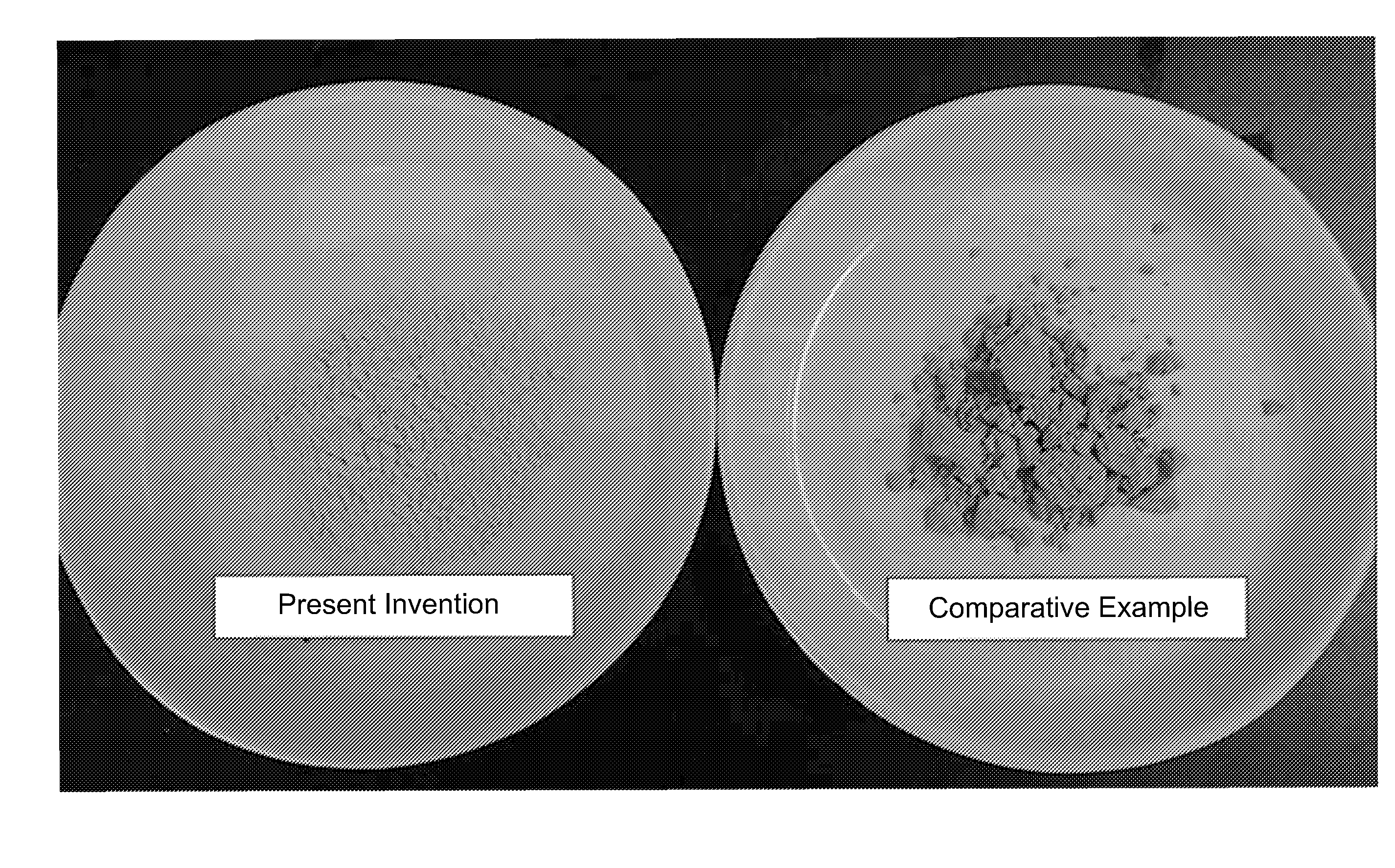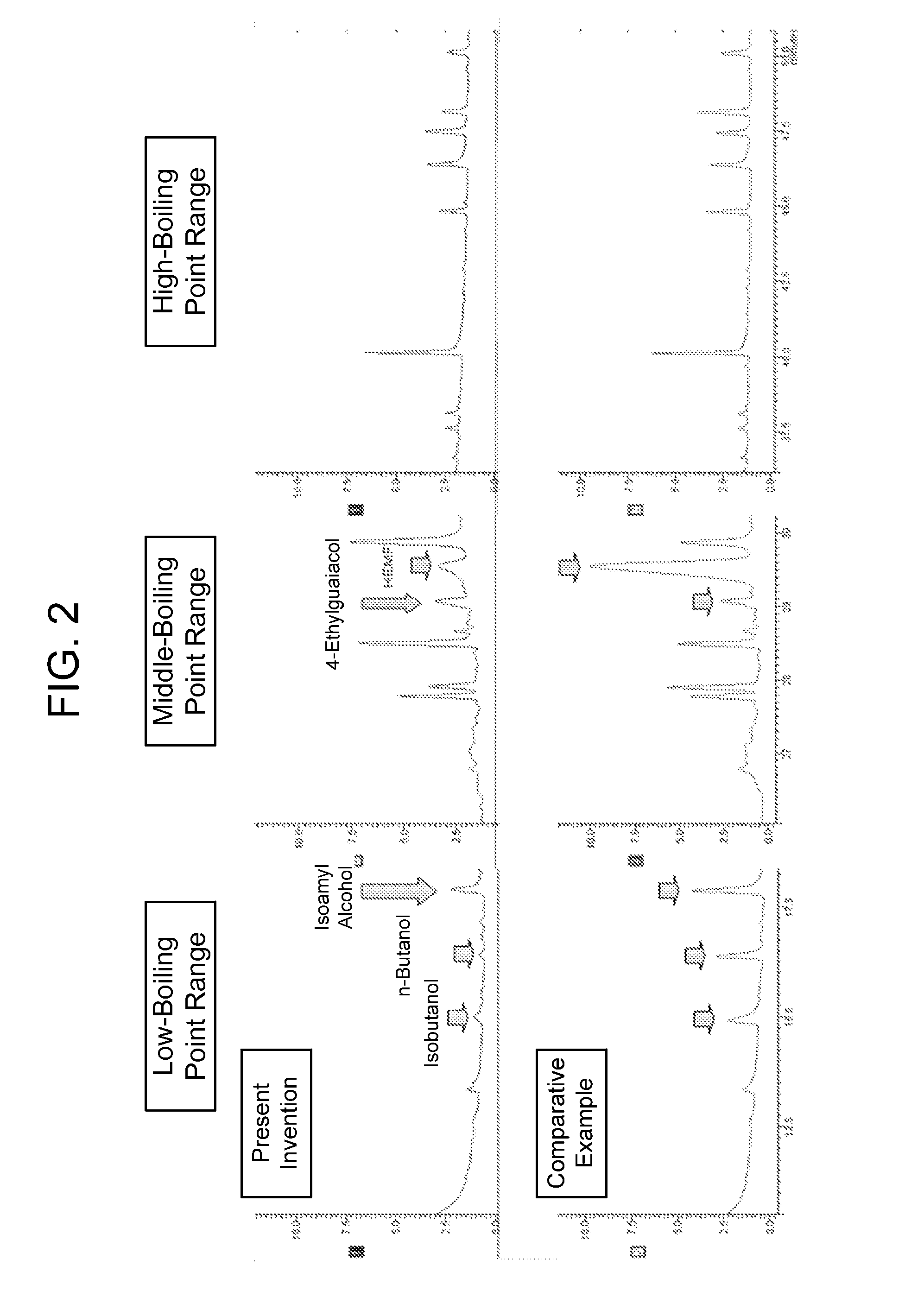Brewed soy sauce and method of producing the brewed soy sauce
a technology brewed soy sauce, which is applied in the field of brewed soy sauce, can solve the problems of high manufacturing cost, high energy cost of brewing, and inability to meet diverse consumer demands
- Summary
- Abstract
- Description
- Claims
- Application Information
AI Technical Summary
Benefits of technology
Problems solved by technology
Method used
Image
Examples
example 1
Production of the Soy Sauce of the Present Invention
[0055]First, water was added to 5 kg of defatted soybean so that the weight of the water added was 80% of the weight of the defatted soybean. Then, the defatted soybean was steamed under the pressure of 2 kg / cm2 for 9 minutes. The steamed defatted soybean was then cooled to be 40° C. Then, the cooled defatted soybean was mixed with 0.6 kg of wheat bran (starch content 12% (W / V)). Thereby, raw material mixture was obtained. Koji mold was inoculated to this mixture. Then, the mixture was incubated in a small, aerated koji-making device at 28° C. of aeration temperature for 24 hours, followed by 26° C. for 20 hours. Thereby, soy sauce koji was obtained.
[0056]5.5 liters of 24.5% salt water was added to 3 kg of the obtained koji in a small container. Thereby, moromi was prepared. This moromi was fermented at 15° C. for 2 weeks. Subsequently, the temperature of moromi was gradually raised. 3 weeks after adding the salt water, C. versatil...
example 2
Effect of the Yeast
[0057]In this example, the soy sauce was brewed by the same method as the one described in the Example 1. However, either of the yeast belonging to Zygosaccharomyces genus or Candida genus was added in the moromi. Then, galactose concentration was measured on day 0, day 14 and day 30 after adding the yeast.
[0058]The results are shown in Table 1. It was found that the Candida yeast reduced the galactose concentration of the soy sauce more significantly. The sugar content was analyzed by high-performance liquid chromatography (HPLC; System; Shimadzu LC10 series, used column; TSK-gel SugarAXG, column temperature; 60° C.), following the standard procedure.
TABLE 1Galactose Concentration % (w / v)Days after Adding Salt Water01430C. versatilis1.110.680.46Z. rouxii1.110.990.84Z. rouxii: NBRC 0506C. versatilis: JCM catalog No 8270
example 3
Characteristics of the Produced Soy Sauce
[0059]Below are the analysis results of the soy sauce produced in the Example 1.
3-1: Chromaticity
[0060]Concentrations of the constituents of the soy sauce produced in the Example 1 were adjusted to be 1.57% (w / v) of total nitrogen, 16.6% (w / v) of sodium chloride and 2.2% (w / v) of ethanol. Then, the concentration-adjusted soy sauce was pasteurized and filtered. Then, the color of the obtained soy sauce was determined by measuring 660-nm transmittance of the soy sauce. The result is shown in Table 2. It was found that the color of the soy sauce of the present invention was much lighter than the regular soy sauce of the comparative example. The chromaticity of the soy sauce of the present invention was as low as that of light soy sauce, which is also called usukuchi shoyu.
TABLE 2Transmittance (%)Present Invention74.7Comparative Example26.1
3-2: Concentration of Reducing Sugars
[0061]Sugar concentrations of the soy sauce of the present invention an...
PUM
 Login to View More
Login to View More Abstract
Description
Claims
Application Information
 Login to View More
Login to View More - R&D
- Intellectual Property
- Life Sciences
- Materials
- Tech Scout
- Unparalleled Data Quality
- Higher Quality Content
- 60% Fewer Hallucinations
Browse by: Latest US Patents, China's latest patents, Technical Efficacy Thesaurus, Application Domain, Technology Topic, Popular Technical Reports.
© 2025 PatSnap. All rights reserved.Legal|Privacy policy|Modern Slavery Act Transparency Statement|Sitemap|About US| Contact US: help@patsnap.com



